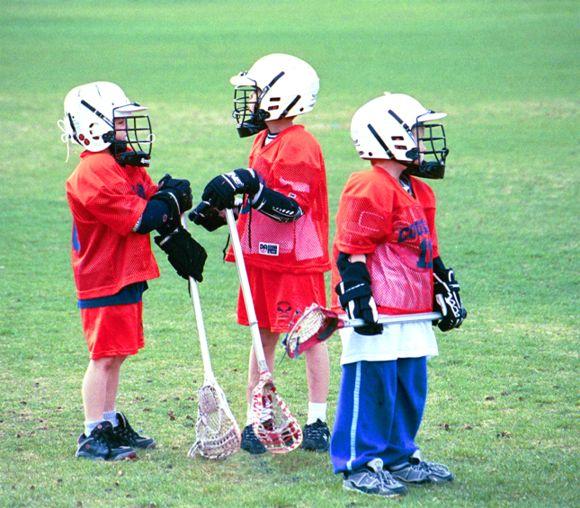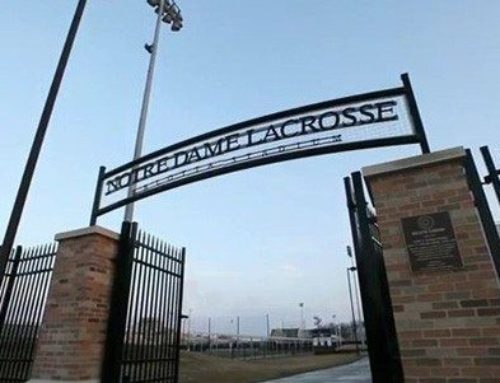With immediate effect, the NCAA banned all Division I lacrosse schools from any contact with players and their families until Sept. 1 of their junior year of high school. Notre Dame coach Kevin Corrigan is vindicated as one of the last hold-outs opposed to the practice of recruiting eighth graders and younger. Recruiting got so silly that the NCAA finally had enough and made an example of lacrosse.
The practice of early recruiting in lacrosse had reached absurd levels. A steady stream of eighth graders were giving verbal commitments to many Division I programs. In the lead up to this NCAA vote (the outcome of which was actually a surprise to most), there was a consensus among coaches that something needed to be done, in their public words at least.
However….while the bulk of coaches came out in support of the ban in the months preceding the vote, in practice the biggest violators kept on trucking and making the rounds of middle school tournaments (and we presume also being hired out as birthday party clowns do get an inside track at even younger players). It would be bad form for us to name names, so will just link to a list of commits to the 2020 class and you can see for yourselves which teams magically already have a full recruiting class of players who have only in the past month first seen a high school field.
We see this as a vindications of how Notre Dame, Coach Corrigan and women’s coach Christine Halfpenny conducted themselves. Speaking of Coach Corrigan specifically, he stayed out of the mess and took commitments only when the student-athletes reached appropriate maturity and when the staff could be sure the player was a mature fit for the locker room. Of course, his reward was to be labelled a “poacher” and a violator of some wacky inner-circle of trust among coaches. The whole criticism seemed particularly rich to us in that the supposedly aggrieved coaches were grown men recruiting little kids.
What does the future hold?
For Notre Dame, this doesn’t change much in practice. It will help avoid some of the blowback in lacrosse circles when a high school senior, who may have, along with his family, been conned into committing to a state school when he was 12, decides at 18 that South Bend may provide him with better long-term opportunities. If anything, this will also help level the playing field for the Irish.
For college lacrosse as a whole, the slimy visuals of coaches pressuring eighth-graders to commit will hopefully disappear.
For college coaches, their may be some concern in how they conduct summer skills clinics for youth players. The rule is absolute and doesn’t appear to afford much wiggle room. For coaches whose recruiting foundation was to pressure middle school kids and their families and now have to completely reconfigure their recruiting strategies, we have no sympathy for you.
The relationship between college coaches to club and high school coaches will be a work in progress. Critics of the new rule suggest this will give untoward power to club coaches, and they seem positioned to become the gate keepers to key recruits. It seems to us that influence will return to high school coaches. High school coaches in stronger programs were faced with a situation where many of their players were already committed to schools before they even tried out for the team. Now, it seems recruiting will return to the more traditional mechanisms. Club vs. high school seems to be the issue of interest in those examining this rule.
The folks in the summer showcase tournament market will need to adjust their business plan. They’ll take an immediate hit as many of these programs will lose value in the short-term. Having said this, they are run by smart and motivated people, so we’re confident they’ll be able to reconfigure their product to something more appropriate.
For young players, this should give them an opportunity to develop in a lower-stress environment and perhaps simply enjoy lacrosse as a kid.
Finally, to us at Team ND-Atl specifically, the new rule will do a lot to rescue youth lacrosse from some of its absurd excesses. With pressure to appear a fully-formed player at 12 years of age, short cuts were taken in developing proper skills and there was little patience for players who were developing physically a bit more slowly. Further, year-round play became a norm and was leading to burn-out. Watching kids lose the desire to play in sixth and seventh grade was disheartening. Some were just playing too much, others became frustrated that club coaches couldn’t afford to carry any players at the fifth grade level that hadn’t already started to mature physically. The whole environment was surreal.
There are a lot of interesting opinions on this legislation. We’re pleased reaction to the change has largely been reasonable.
We’ll see soon if this is a solution. It did not take long for the rule to be tested. Of course, two days after the vote it was Michigan who was in conflict with the ban, with prospects apparently unaware that the rule had immediate effect:
2nd public Class of 2021 verbal: Aidan Mulholland, M, Manhasset (N.Y.) / @IglooLacrosse committed to Michigan. Tore up the @WorldSeriesLax.
— Ty Xanders (@tyxanders) April 16, 2017





One effect we forget to mention is that the new rule will hopefully help lacrosse parents relax a bit and enjoy watching their kids play. The pressure of the early recruiting environment brought out the worst in many people.
We see it in the academic world too – my wife is an elementary teacher, and has kids who are stressed out about how the upcoming standardized test is going to affect their college prospects. Like, be a fifth grader, kid. Go climb a jungle gym and pick up a frog and look for shapes in the clouds. Or go play lacrosse and have fun doing it without any concerns about scholarships.
Good stuff.
Good analog, we hadn’t considered that comparison!
Seriously? I was under the impression that standardized tests in grade school don’t determine much outside of school funding. I wasn’t concerned with how my scores would affect college prospects until I took the ACT junior year.
Standardized tests these days impact eligibility for advance content and honors academic tracks as early as second grade in my area. Parent’s go nuts about them as a result because of the chance permanent placement for advanced academics can be locked in so early.
Yes, in our school district you can get practically locked into a math track in fourth grade – it essentially determines whether you can take AP Calc in high school. There are later opportunities to switch into higher tracks, but they take titanic efforts by both the parents and the student.
On the list of 2020 commits you posted, I was shocked by the presence of service academies and Ivies. In both cases, the prospect of eventual admittance for an 8th grader seems extremely tenuous, at best. The parents are kind of nuts, IMO.
We’re glad you noticed! The “carrot” for early recruitment/commitment is admittance, not scholarships since anything more than a fractional scholarship is rare. The exception is service academies, who effectively have unlimited scholarships. On this, the idea that an eighth grader is capable of making the truly lifetime decision on entering the military does not compute with us.
You clearly didn’t grow up in a military family, in a military town. Though most military towns are not in lacrosse country (other than DC).
A fair point, we’ve tried to cross reference against football recruiting for the academies and cannot find exact data, but it does not at all seem academy football seeks commitment from 8th graders from what we can find.